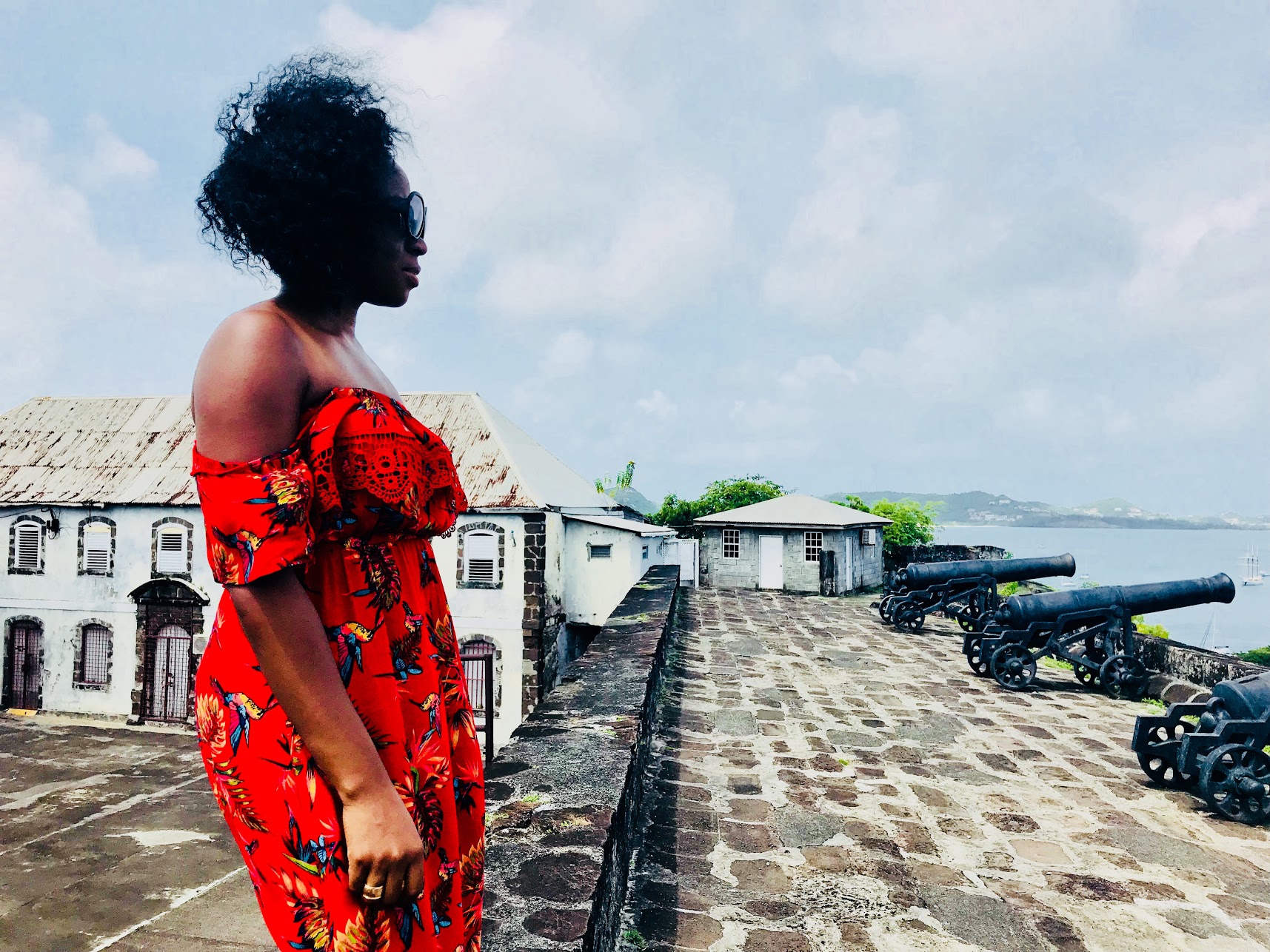on

By Kamille D. Whittaker, kwhittaker@atlantatribune.com
As the spiced rum starts to flow at Crown Heights Rum Shop in an interior village in Grenada, earnest negotiations ensue among a small consort of men and women: Whether they will Jab Jab for J’ouvert; whether the costumes have been procured or paid down; whether they will go all out, or a notch below this year, as opposed to last; and how they plan to rest and dry out in the days preceding the endless fêtes. Because once carnival – Spicemas — comes in August, there is no rest or quarter for the weary. There’s a whole year to prepare and practice, after all.
Sometimes, there are quiet gripes by the elderly about what they say the youth have “turned carnival into.” But, there is an unspoken social contract – you play mas and fête until you don’t, and when you stop, you let the youth – an ambiguous classification on the island, to be sure — have their run.
Besides — the energy around carnival, at night and by day, is undeniably electric.
For Grenada, strong and affable, there is no grace period in its courtship – no interval of insecurities where doubts creep in. Like a confident and content lover, it is everything it purports to be – and as such, you can take it or leave it. But you’ll want no parts of the latter.
The contemporary part of its own history – as was the colonial plight of most Caribbean islands — plays out like a lover’s quarrel between Britain and France.
Control of the islands that make up Grenada including Carriacou and Petite Martinique, volleyed back and forth between Great Britain and France in the 18th century, with the British ultimately prevailing. In 1795, Fédon’s Rebellion, inspired by the Haitian Revolution nearly succeeded, but was crushed with significant military intervention. Slavery was abolished in the 1830s and over a century later, Grenada achieved its political independence from Britain in 1974.
And throughout all the back and forth, the Grenadian Jab Jab remained as a symbol of the island’s link to Africa and the Diaspora during carnival as with Haiti, where there is the Lanse Kod, and in Trinidad the Jab Molassie. In all iterations, the masqueraders paint themselves black with Cannes Brulees or “burnt cane” and act out the metaphorical machinations of a people with its collective mind stayed on freedom.
 GOOD HARVEST
GOOD HARVEST
There’s a saying that Tivoli Harvest Circle, on the grounds of the Tivoli Roman Catholic Church, is where prominent men say they met their wives. “Make bus and come over to the Harvest,’ it’s said, as evidence of the islands’ spice and crop offerings’ centrality to social affairs.


If not at Tivoli, meander through the open-air Spice Market in the heart of St. George’s and see, smell, and taste all that Grenada produces. There are at least 10 spices for starters including mace, cinnamon, clove, turmeric, saffron and vanilla. The star, nutmeg, which they call a “lady in a boat with a red petticoat,” is the most popular culinary export and good and is ubiquitous in products from syrup, to ice cream, to nail polish preservative. Grenada’s culinary positioning in the Caribbean is set apart because of this multifunctionality, in fact; from Oil Down, its national dish, which combines breadfruit and ground provisions, salted meat, coconut milk and turmeric, to the multi-purposes of its fruits like Papaya, where the natural enzymes in the milk from its outer layer can be used to tenderize meat. The “greener” the Papaya the better. The saffron and turmeric that is grown in Grenada takes care of inflammation and is a natural preserver that doesn’t ferment. While ginger, bay leaf, moringa, and sea moss can all supplant the flu shot. There are year-round commemorations of Grenada’s food and social meldings. Annually in Carriacou, for example, during harvest time, the whole village comes together for a wetting of the ground with rum and water, traditional food and drinks, and drumming and dancing traced back to the African tribes they believed they originated from. It’s a traditional practice of marronage, where all come together to cook and share the good harvest.

SAIL AWAY
The Carenage is St. George’s lively waterfront promenade, which winds around Grenada’s inner harbor. Its name is derived from the French word carenage, meaning “safe anchorage.” Lined with a cascade of colonial-era buildings, the inlet offers shops, seafood restaurants, and cafés. Like some French cities, steps, tunnels and alleyways are interspersed between the Caribbean’s most picturesque harbor and the epicenter for the islands’ vibrant boating culture. Savvy’s Boat Tour offers a pitch perfect introduction to the island. Spend some time out at sea on a traditional Carriacou wooden sloop and learn the history of the islands’ boat building, boat launching and vibrant regattas whilst enjoying a rum punch with rum fermented, distilled, aged and bottled right on the island.

SIP + SAVOR
Amerindian Petroglyphs // Grenada’s original peoples carved symbols and images on rocks from the South in St. Georges to the west side of the island, up the river to St. Andrews and St. Patrick. And they’ve been preserved.
Sip and Savor Tour // See and sip the Spice Island like a local on this half-day, bar hopping and food tasting tour exploring Grenada’s libation and cultural scene. Grenada’s top mixologists will show you their fresh take on authentic indigenous spirits.
Hash / / Every Saturday on the island, you can find a group of hashers who participate in a run/walk through the fantastic jungle and beautiful terrain in an exhilarating exercise called “hashing.” It’s a great way to stay fit, be part of a fun group and be introduced to some unknown parts of the island.
Annadale Waterfall // Visit one of Grenada’s most popular waterfalls, which also features trails and an herb and spice garden.
Grand Etang Lake & Forest Reserve // The 3,088-acre Grand Etang Forest Reserve is the oldest and largest protected area in Grenada. Grand Etang’s varied elevation and terrain maintain several different ecological subsystems, culminating in elfin woodlands high up the slopes of the reserve’s central mountains.
Belmont Estate Chocolate Factory //Known as the Caribbean’s finest Agro-tourism experience, visitors are given the opportunity to participate in and observe the workings of a fully functional historic plantation and of Grenada’s organic chocolate production.
Andy’s Soup House // Start with a refreshing Soursop Juice and finish well with nutmeg ice cream.

STAY HERE
At Mount Cinnamon Resort, heritage-meets-modern haven. Bespoke artistry is entwined with a hint of exquisite elegance. The eco-luxe hideaway is spiced with moments to savor, backdropped by a lush hillside, with 31 spacious suites and villas overlooking two miles of Grand Anse Beach and the Caribbean Sea.

This press trip was crafted by the Grenada Tourism Authority — Pure Grenada — and originally published in Atlanta Tribune: The Magazine‘s April 2019 issue.
Join our email list to stay connected.
More Transformative Travel







Pingback: 2LOTVIP ฝาก - ถอนออโต้
Pingback: polaris canada
Pingback: sci-sciss
Pingback: luckyvip77
Pingback: togel hari ini
Pingback: ชั้นวางสินค้าอุตสาหกรรม
Pingback: white faced capuchin monkey
Pingback: 9mm 124GR. Colt Defense Ammunition™ JHP For Sale Online